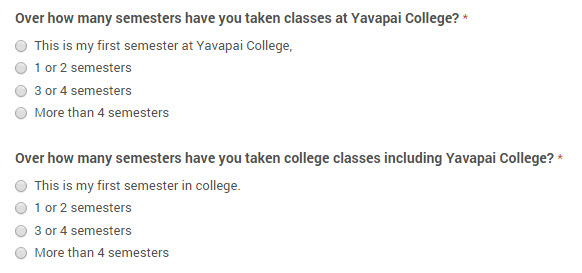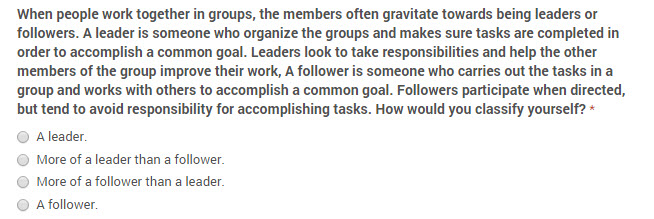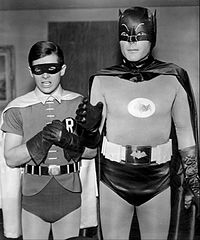
The easiest way to assign students to teams is to simply assign them randomly and wait for the fallout. Left on their own, students have a tendency to socialize, not work toward a common goal. A group without a leader is likely to flounder aimlessly until the very last minute. A group without any technology skills will often implode. To be effective, the groups need to be an appropriate mixture. I needed Batman AND Robin (and maybe Batgirl). They had complimentary skills…experience and youthful enthusiasm….brains and support. Teams that have these types of complimentary skills, are most likely to succeed.
To gauge what each student was like, I created a survey in Google Forms. In a later post I’ll look at the mechanics of how this is done. In this post I want to look at the questions I posed and how I used the responses to assign groups.
In the first two questions, I asked each student about their level of college experience.
Each group needs to have several levels of college experience. New college students do not have a good sense of how much time coursework can take. By mixing new college students with more experienced students, groups will not wait until the last minute to work on their projects. But this mixture is not a one way street. Recent high school graduates are more likely to have participated in collaborative learning in their high school courses. They are more likely to embrace group work than more veteran college students.
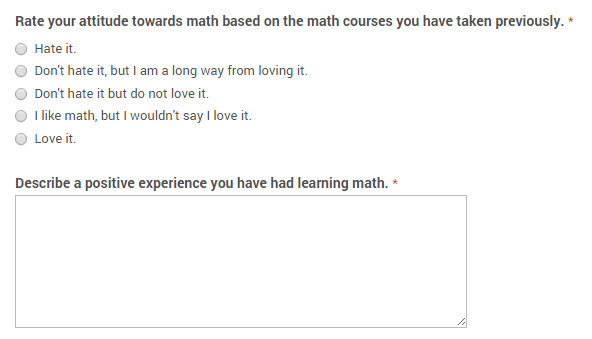
This is the most important question in the survey. Each group needs to have one leader in the group. I also do not want a group of five leaders all together. Like other questions, I want to balance of leadership to make sure each group moves forward.
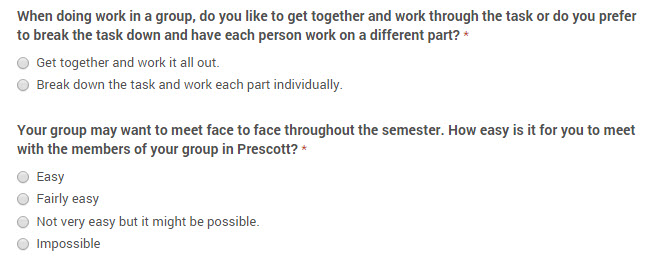
Spreadsheets are a very important part of my College Algebra class. I teach students how to work with them in the class. However, groups with prior technology experience function better than groups without that experience. Less experienced members can learn from more experienced members. I seed students with good technology skills throughout the teams so that each team has a technology “expert”.


